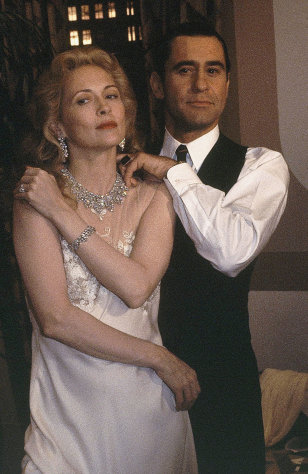ScienceDaily (Jan. 26, 2012) ? NASA's Kepler mission has discovered 11 new planetary systems hosting 26 confirmed planets. These discoveries nearly double the number of verified Kepler planets and triple the number of stars known to have more than one planet that transits, or passes in front of, the star. Such systems will help astronomers better understand how planets form.
The planets orbit close to their host stars and range in size from 1.5 times the radius of Earth to larger than Jupiter. Fifteen are between Earth and Neptune in size. Further observations will be required to determine which are rocky like Earth and which have thick gaseous atmospheres like Neptune. The planets orbit their host star once every six to 143 days. All are closer to their host star than Venus is to our sun.
"Prior to the Kepler mission, we knew of perhaps 500 exoplanets across the whole sky," said Doug Hudgins, Kepler program scientist at NASA Headquarters in Washington. "Now, in just two years staring at a patch of sky not much bigger than your fist, Kepler has discovered more than 60 planets and more than 2,300 planet candidates. This tells us that our galaxy is positively loaded with planets of all sizes and orbits."
Kepler identifies planet candidates by repeatedly measuring the change in brightness of more than 150,000 stars to detect when a planet passes in front of the star. That passage casts a small shadow toward Earth and the Kepler spacecraft.
"Confirming that the small decrease in the star's brightness is due to a planet requires additional observations and time-consuming analysis," said Eric Ford, associate professor of astronomy at the University of Florida and lead author of the paper confirming Kepler-23 and Kepler-24. "We verified these planets using new techniques that dramatically accelerated their discovery."
Each of the newly confirmed planetary systems contains two to five closely spaced transiting planets. In tightly packed planetary systems, the gravitational pull of the planets on each other causes some planets to accelerate and some to decelerate along their orbits. The acceleration causes the orbital period of each planet to change. Kepler detects this effect by measuring the changes, or so-called Transit Timing Variations.
Planetary systems with Transit Timing Variations can be verified without requiring extensive ground-based observations, accelerating confirmation of planet candidates. This detection technique also increases Kepler's ability to confirm planetary systems around fainter and more distant stars.
"By precisely timing when each planet transits its star, Kepler detected the gravitational tug of the planets on each other, clinching the case for 10 of the newly announced planetary systems," said Dan Fabrycky, Hubble Fellow at the University of California, Santa Cruz, and lead author for a paper confirming Kepler-29, 30, 31 and 32.
Five of the systems (Kepler-25, Kepler-27, Kepler-30, Kepler-31 and Kepler-33) contain a pair of planets where the inner planet orbits the star twice during each orbit of the outer planet. Four of the systems (Kepler-23, Kepler-24, Kepler-28 and Kepler-32) contain a pairing where the outer planet circles the star twice for every three times the inner planet orbits its star.
"These configurations help to amplify the gravitational interactions between the planets, similar to how my sons kick their legs on a swing at the right time to go higher," said Jason Steffen, the Brinson postdoctoral fellow at Fermilab Center for Particle Astrophysics in Batavia, Ill., and lead author of a paper confirming Kepler-25, 26, 27 and 28.
Kepler-33, a star that is older and more massive than our sun, had the most planets. The system hosts five planets, ranging in size from 1.5 to 5 times that of Earth. All of the planets are located closer to their star than any planet is to our sun.
The properties of a star provide clues for planet detection. The decrease in the star's brightness and duration of a planet transit combined with the properties of its host star present a recognizable signature. When astronomers detect planet candidates that exhibit similar signatures around the same star, the likelihood of any of these planet candidates being a false positive is very low.
"The approach used to verify the Kepler-33 planets shows the overall reliability is quite high," said Jack Lissauer, planetary scientist at NASA Ames Research Center at Moffett Field, Calif., and lead author of the paper on Kepler-33. "This is a validation by multiplicity."
These discoveries are published in four different papers in the Astrophysical Journal and the Monthly Notices of the Royal Astronomical Society.
Ames Research Center in Moffett Field, Calif., manages Kepler's ground system development, mission operations and science data analysis. NASA's Jet Propulsion Laboratory, Pasadena, Calif., managed the Kepler mission's development.
Ball Aerospace and Technologies Corp. in Boulder, Colo., developed the Kepler flight system and supports mission operations with the Laboratory for Atmospheric and Space Physics at the University of Colorado in Boulder.
The Space Telescope Science Institute in Baltimore archives, hosts and distributes Kepler science data. Kepler is NASA's 10th Discovery Mission and is funded by NASA's Science Mission Directorate at the agency's headquarters in Washington.
For more information about the Kepler mission and to view the digital press kit, visit http://www.nasa.gov/kepler . More information about exoplanets and NASA's planet-finding program is at http://planetquest.jpl.nasa.gov .
Recommend this story on Facebook, Twitter,
and Google +1:
Other bookmarking and sharing tools:
Story Source:
The above story is reprinted from materials provided by NASA/Jet Propulsion Laboratory.
Note: Materials may be edited for content and length. For further information, please contact the source cited above.
Note: If no author is given, the source is cited instead.
Disclaimer: Views expressed in this article do not necessarily reflect those of ScienceDaily or its staff.
Source: http://www.sciencedaily.com/releases/2012/01/120126155915.htm
rimm brad pitt brad pitt us constitution us constitution articles of confederation articles of confederation





